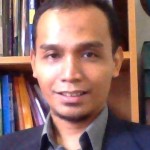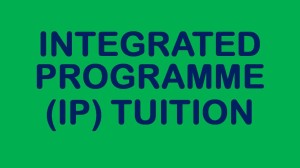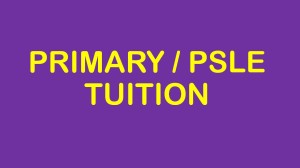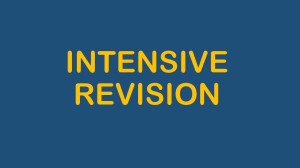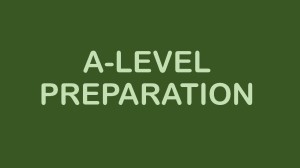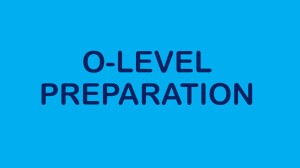For our latest timetable, click here => 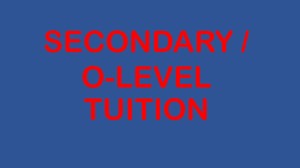
===============================================================
ORIGINAL POST(OUTDATED):
From my experience as a Physics teacher and tutor, Sec 4 students need a systematic way of revising their Sec 3 Physics topics for their SA1 or first Prelim exam. Thus I will be conducting the following 3-hr workshops at my home centre for Sec 4 Physics students (for registration, sms or call 97860411):
Level/Subject: S4 Pure Physics
Day/Time: Saturdays, 4 pm to 7 pm ( 3hrs)
Location: Blk 627 Bukit Batok Central #07-640
Dates: 6, 13, 20, 27 April
Topics: 6 Apr – Measurement & Kinematics; 13 Apr – Forces, Mass, Weight & Density; 20 Apr – Moments, Energy, Work & Power; 27 Apr – Pressure.
Target Group: This series of revision workshops is suitable for low to medium ability Sec 4 or Sec 3 Physics students who need to revise their Physics in a systematic and effective way.
Focus: Conceptual Understanding, Solving Challenging or Tricky Physics Problems, Exam-Answering Techniques.
Format: Lecture + Worksheets + Discussions
Fees: $360 for whole revision package (inclusive of refreshments and materials)
Class Size: 2 to 8 students.
Tutor: Mr Ilyasa; M.Ed (NIE), PGDE (NIE), BSc (NUS), Ex-RI/RJC; ex-sch teacher, full-time tutor of PSLE, O and A Level Math and Physics. (h/p: 97860411)
A former secondary school Physics teacher, Mr Ilyasa has been coaching students in ‘A’ Level (H2/H1) Physics and (H2/H1) Mathematics for more than 7 years, as well as ‘O’ Level Physics, Additional Math, Math and PSLE Math for more than 10 years. An alumnus of RI and RJC, Mr Ilyasa holds a Bachelor of Science degree with Merit from the National University of Singapore, a Postgraduate Diploma in Education with Credit from the National Institute of Education, Singapore, and a Master of Education (Curriculum & Teaching) degree also from the NIE, Singapore.
To register, kindly call or send an sms to 97860411.
A-Level & O-Level 2013 Preparation (morning classes, mainly for those re-taking)
We do provide coaching for students who are free to attend classes in the mornings or early afternoons. Such students are typically those who are re-taking their A-levels or O-levels. The levels and subjects offered are:
A-Level: General Paper, (H2/H1) Economics, (H2/H1) Math, (H2) Management of Business. (H2/H1) Physics (upon request)
O-Level: English, Math, Additional Math, Science (Physics/Chemistry), Pure Physics, Pure Chemistry, Economics, Business Studies.
Class type: Small group or Individual
Location: 3-min walk from Bukit Batok MRT station.
For other details, such as timings and fees, kindly call or sms to 97860411, or send an email to ilyasa@conceptlearning.sg.
The Tutors:
Mr Ilyasa: A former MOE school teacher, Mr Ilyasa has been coaching students in ‘A’ Level Physics, Mathematics and Economics for more than 7 years, as well as ‘O’ Level Physics, Additional Math and Math for more than 10 years. An alumnus of RI and RJC, Mr Ilyasa holds a Bachelor of Science degree with Merit from the National University of Singapore, a Postgraduate Diploma in Education with Credit from the National Institute of Education, Singapore, and a Master of Education (Curriculum & Teaching) degree also from the NIE, Singapore.
Mr Jay Lim: An experienced full-time tutor, Mr Lim holds a Master of International Management (USA), B.Sc (USA) majoring in Finance & Retail Management, Higher Stage Certificate in Economics, The London Chamber of Commerce & Industry. He was formerly a financial services consultant and an ex-bank officer. Mr Lim has been teaching English at various levels in an Integrated Programme school for about 5 years. He will be focusing on General Paper, Management of Business and Economics in Singapore Learner.
For details, such as timings and fees, kindly call or sms to 97860411.
===================================================
For our latest timetable, click here => 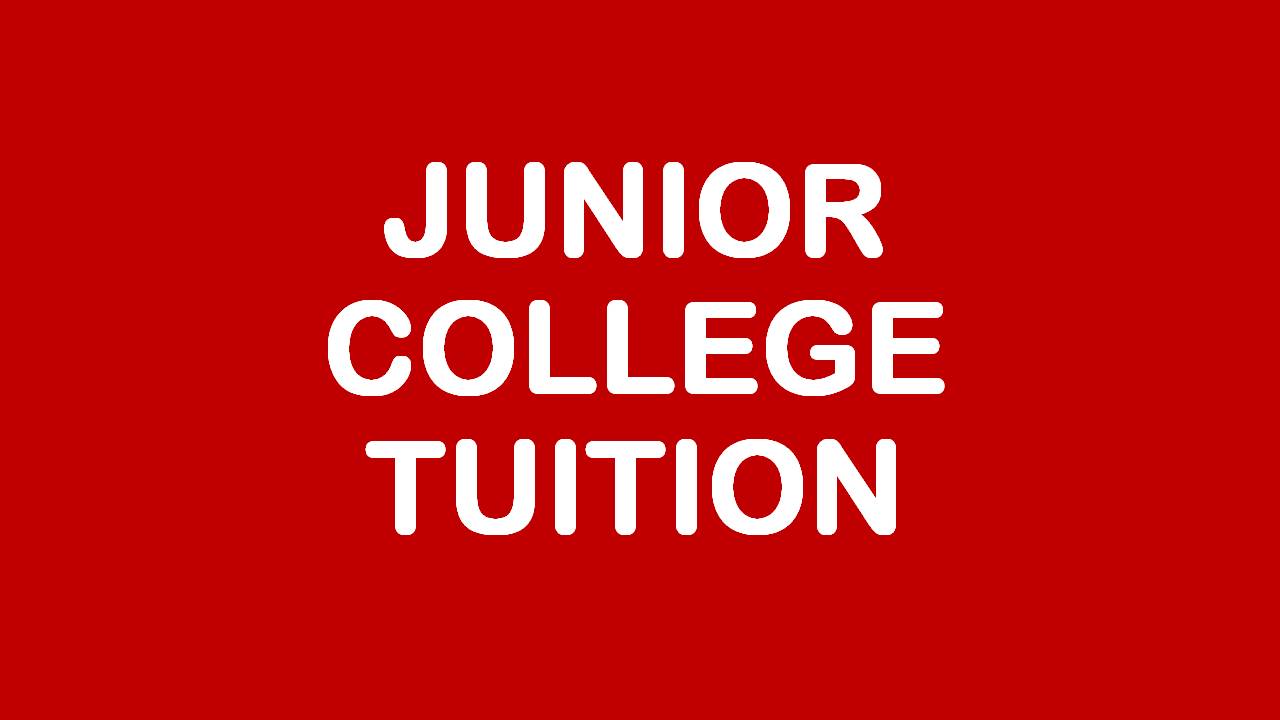
Sec 4 Physics Tuition By Ex-Sch Teacher
For our latest timetable, click here => 
==========================================================
ORIGINAL POST(OUTDATED):
Sec 4 Physics (Fast-Track): Sunday | 9.30 am – 11.15 am | Code: S4P1
Sec 4 Physics: Tuesday | 8.00 pm – 9.45 pm | Code: S4P2
Sec 4 Science (Physics): Tuesday | 8.00 pm – 9.45 pm | Code: S4P3
Sec 3 Physics: Friday | 4.00 pm – 5.45 pm | Code: S3P1
Sec 1-2 Physics (IP / Fast-Track): Thursday | 6.00 pm – 7.45 pm | Code: S12PIP
Related link: S4 Physics Tuition Schedule 2015
——————————————————————————————————
The Tutor:
Mr Ilyasa: A former MOE school teacher, Mr Ilyasa has been coaching students in ‘A’ Level & IB Physics and Mathematics for more than 6 years, as well as ‘O’ Level & IP Physics, Additional Math, E. Math and PSLE Math for more than 10 years. An alumnus of RI and RJC, Mr Ilyasa holds both a Master of Education degree and a Postgraduate Diploma in Education with Credit from the National Institute of Education (NIE), as well as a Bachelor of Science degree from the National University of Singapore (NUS).
———————————————————————————————————–
Administrative Matters:
Location: Blk 644, Bukit Batok Central, #01-68. S(650644).
Our location is just a 3-min walk from either the Bukit Batok MRT station or the Bukit Batok Bus Interchange. Buses that stop along the roads surrounding our location are numbers 157, 178, 66, 506, 173, 174, 176, 187, 985. Buses services which terminate at Bukit Batok Bus Interchange are 61, 77, 106, 173, 177, 189, 852, 941, 945, 947.
TO REGISTER, SMS <STUDENT NAME>, <CODE> TO 97860411.
For enquiries, kindly call or sms to 9786 0411.
Sec 3 Physics Tuition By Ex-Sch Teacher
For our latest timetable, click here => 
==========================================================
ORIGINAL POST(OUTDATED):
Sec 3 Physics: (Investment amt: $180 per mth).
Wed 5.45 pm to 7.15 pm;
Sat 10.45 am to 12.15 pm;
Tutor: Mr Ilyasa; M.Ed (NIE), PGDE (NIE), BSc (NUS), Ex-RI/RJC; ex-sch teacher, full-time tutor of PSLE, O and A Level Math and Physics. (h/p: 97860411)
A former secondary school teacher, Mr Ilyasa has been coaching students in ‘A’ Level (H2/H1) Physics and (H2/H1) Mathematics for more than 7 years, as well as ‘O’ Level Physics, Additional Math, Math and PSLE Math for more than 10 years. An alumnus of RI and RJC, Mr Ilyasa holds a Bachelor of Science degree with Merit from the National University of Singapore, a Postgraduate Diploma in Education with Credit from the National Institute of Education, Singapore, and a Master of Education (Curriculum & Teaching) degree also from the NIE, Singapore.
DETAILS:
Location: Blk 627 Bukit Batok Central #07-640
Average Class Size: 2-6 students
To register, kindly call or send an sms to 97860411, indicating the Student Name, the Subject and Level.
Sec 4 Physics Reflections 03/02/13 – Current Electricity
Today, I asked them a few questions to improve their conceptual understanding of electricity:
(1) What is the difference between e.m.f and potential difference?
(2) What is the difference between resistance and resistivity?
(3) How do you derive the unit for resistivity?
(4) Why does the resistance of a metallic conductor increase when its temperature increases?
(5) Why is the ammeter connected in series to a resistor but the voltmeter is connected in parallel?
Some points to note:
(1) Resistance is NOT the gradient of the V-I graph.
(2) The I-V and V-I graphs of a conductor may be different and you’ll need to understand why and explain the difference.
Rgds,
Ilyasa, M.Ed, PGDE, ex-MOE Math and Physics teacher (hp: 97860411)
=============================================================
For our latest timetable, click here => 
Sec 4 Physics Reflections 27/01/13 – Applications of Electrostatics
I wanted to proceed to Current Electricity, but the students wanted more discussion on how to answer application questions on electrostatics.
So I supplied them with quite a number of such application questions, often with confusing diagrams. The key to answering such questions is to first draw the distribution of charges on the items in the diagram, and identify which objects are conductors and which are non-conductors. For the conductors, check whether they are insulated from the surroundings.
Key points to note:
(1) Only non-conductors can be charged by rubbing (why?)
(2) Electrons can flow into and out of only conductors, and only when the conductors are in contact with other conductors (why?)
(3) A charged object can attract a neutral conductor (why?) and a charged object can also attract a neutral non-conductor (why?)
(4) Upon contact with a highly charged object, a conductor behaves differently from a non-conductor (why?)
Rgds,
Ilyasa, M.Ed, PGDE, ex-MOE Math and Physics teacher (hp: 97860411)
=============================================================
For our latest timetable, click here => 
=============================================================
Sec 4 Physics Reflections sun1415 20/01/2013 – Electrostatics
I completed the teaching of Electrostatics to this class of 6 eager boys from a top school. First I showed a video of how a home-made electroscope is used to determine the kind of charge on a rubbed insulator.
I like to link topics to real life, so I described to them one of my roles while serving NS – to attach cargo to the bottom of a helicopter in what is commonly known as “underslung” operations. But we have to discharge the helicopter first, which is flying above our heads, using a long earth wire, else we may get an electric shock.
We covered definitions, procedures and concepts such as electric field and electric field lines. I even taught them an A-Level formula, F = Qq/kr^2, so that they understand that the electric force between two charged particles is the same for both charges even though the sizes of the charge on them are different.
We also discussed answers to a challenging worksheet and true enough, the students have certain misconceptions about charges and their movement.
Next week, we’ll start on Current Electricity. It’ll be fun.
Ilyasa, M.Ed, PGDE, ex-MOE teacher
(hp: 97860411)
=============================================================
For our latest timetable, click here => 
=============================================================
Reflections on Sec 4 Physics class (9/12/12) …
Just like in the Sec 4 A Math class ytdy, we revised Sec 3 Physics instead, but I will move on to Electricity in Jan 2013. The two students in this class are from Nan Hua and NJC, in case you want to know, although I find it strange that parents ask me which schs the students come from (I’ll write another article soon – ‘The kinds of parents who call me’). C’mon, if you are weak in Physics, you are weak in Physics, even if you are a graduate from Harvard. Apparently, parents are concerned about the syllabi. However, let me tell you something – even two IP schs or two non-IP schs can be at different topics in Physics at the same time. As for level of difficulty, Sec 4 Physics is Sec 4 Physics; no IP sch is going to teach Quantum Physics at Sec 4 ok, except, maybe, NUS High. In fact, some O-level sch prelim papers are harder than those of the IP schools.
We covered Kinematics and Moments ytdy, and as usual, students have misconceptions about free-falling objects, free body diagrams, kinematics graphs and what constitutes ‘perpendicular distance’ and ‘line of action of the force’ in the calculation of moments. Since they were new students, I also listed the 6 ways that examiners make physics questions difficult, and these have nothing to do with physics! (I will post an article abt this some time soon). Every year, I find that students THINK that they know Kinematics and Dynamics, but they can’t answer some conceptual questions I ask. Even some JC students have actually not understood their Sec 3 Physics!
Related post:
Metacognition – The ‘secret’ to learning and problem-solving …
You don’t have to be ‘good in English but bad in Math’, or ‘good in Science but lousy in History or Literature’, or ‘good in Chinese but lousy in English’. It doesn’t have to be a one-or-the-other kind of thing. Every subject has its own way of learning and thinking about, but you can only discover it if you bring yourself one level up – think about the thinking itself, and think about how you learn. You can only learn how to learn if you think about learning. You can only learn how to think if you think about thinking.
Thinking about thinking has another name: metacognition, which formed the basis of my minor research work completed in 2011 at the NIE. A lot of research into metacognition centers around mathematical problem-solving, although metacognition can be applied equally well to other subjects. So for the purpose of illustration here, I will use math as the basis for our discussion about metacognition.
What is Metacognition?
In its simplest form, metacognition can be described as thinking about thinking (Wellman, 1985). Flavell (1976) has stated some examples of what constitutes metacognition:
I am engaging in metacognition if I notice that I am having more trouble learning A than B; if it strikes me that I should double-check C before accepting it as a fact; (…)if I become aware that I am not sure what the experimenter really wants me to do; if I sense I had better make a note of D because I may forget I; if I think to ask someone about E to see if I have it right. (p. 232).
The above sounds familiar, doesn’t it? Yes, you may have been practising metacognition sub-consciously, all your life, without realising it has a formal name, or without realising how important it is to learning and thinking.
Research in metacognition has examined various forms of cognitive processes by building on Flavell’s initial notion of metacognition as the monitoring, regulation and arrangement of thinking processes to achieve specified goals (Gama, 2004).
For example, Brown (1987) argues that metacognition consists of two components: knowledge of cognition, and regulation of cognition. The former involves being aware of one’s cognitive abilities through self-reflection while the latter pertains to mental activities such as monitoring and controlling one’s thinking processes in the course of learning or problem-solving. According to Brown, although these two types of metacognition are distinct from one another, they are usually used together in the same cognitive process as one type often utilises the service of the other (Gama, 2004).
Note: The above paragraphs are adapted from my minor research paper, Examining Supports for Metacognition in Singaporean Lower Secondary Mathematics Textbooks, NIE, 2011. All rights reserved.
Related links:
(1) Metacognition and problem-solving;
(2) Metacognition enhances learning;
(3) Is Metacognition part of the Singapore Math curriculum?
TUITION CLASSES:
_______________________________________________________________
EDUCATIONAL SERVICES:
______________________________________________________________
By EX-MOE TEACHERS & EXPERIENCED TUTORS
@ BLK 644, BUKIT BATOK CENTRAL, #01-68. S(650644).
CALL 65694897 OR SMS 98530744 OR 97860411.
Sec 4 Physics Nov/Dec 2012 Headstart Programme – Electricity
For our latest timetable, click here => 
==============================================================
ORIGINAL POST(OUTDATED):
The details of the 2-day, 6-hr programme are as follows:
Date/Time (choose one pair of sessions only):
(1) Sat 24 Nov (10 am to 1 pm) and Sun 25 Nov (10 am to 1 pm);
(2) Sat 8 Dec (10 am to 1 pm) and Sun 9 Dec (10 am to 1 pm);
Location: Blk 627, Bukit Batok Central, 07-640.
Class size: Max 6 students.
Investment amt: $150 total for both days (6 hrs).
Topics: Electrostatics, Current Electricity
Tutor: Mr Ilyasa; M.Ed (NIE), PGDE (NIE), BSc (NUS), A-Level (RJC); ex-sch teacher, full-time tutor (8 years) of PSLE, O and A Level Math and Physics.
To book a place in the programme, sms to or call Mr Ilyasa at 97860411.
